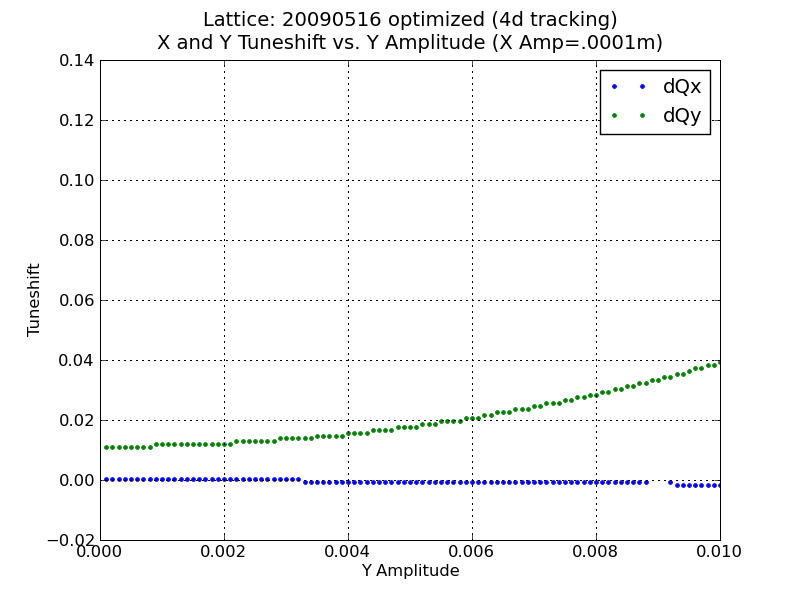2010.08.31 - Amplitude-Dependent Tuneshift in Wiggler-Free Lattice
Start with a wiggler-free lattice
(chess_5289mev_lowemit_20100121.lat) and re-optimize sextupoles using
standard constraints from 2010.05.04. Compare vertical
amplitude-dependent tuneshift to cta_2085mev_20090516_newsext.lat,
which has a non-trivial vertical tuneshift.
cta_2085mev_20090516_newsext.lat

chess_5289mev_lowemit_20100121.lat, 2fam sextupoles
merit contributions

chess_5289mev_lowemit_20100121.lat, optimized sextupoles
merit contributions

From tracking, tuneshift reduced by ~40% after optimization. From
contributions to the merit function, tuneshift reduced by five orders
of magnitude.
-----
2011.01.12 - addendum: DLR has pointed out that there may be a
sextupole component in the fringe fields of the dipoles which BMAD is
using. To test this theory, try turning off all sextupoles in the
CHESS low-emittance lattice and run the tracking job again:

Indeed, this looks close to what we get when the sextupoles have been
optimized. This indicates that the residual is NOT from the
sextupoles, and is therefore from fringe fields in other magnets.
Back
